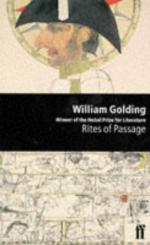|
This section contains 551 words (approx. 2 pages at 300 words per page) |

|
The format of the journal is a new one for Golding and one for which he received much critical praise. The story is told through Talbot's journal entries and Colley's letter. By using the language appropriate to each character and to the late eighteenth century, Golding imbues the work with the feeling of the period and moves the reader into the minds of Talbot and Colley.
Typically, Golding uses the reversal of perspective at the end of the novel, but he skillfully weaves it into Talbot's narrative by making Colley's letter part of the journal.
In Close Quarters Golding continues to use the narrative form of a fictional sea journal employed in Rites of Passage but changes the perspective slightly by having Talbot keep this journal for himself rather than his benefactor and godfather. The result is that Talbot no longer has to concern himself with keeping up...
|
This section contains 551 words (approx. 2 pages at 300 words per page) |

|




